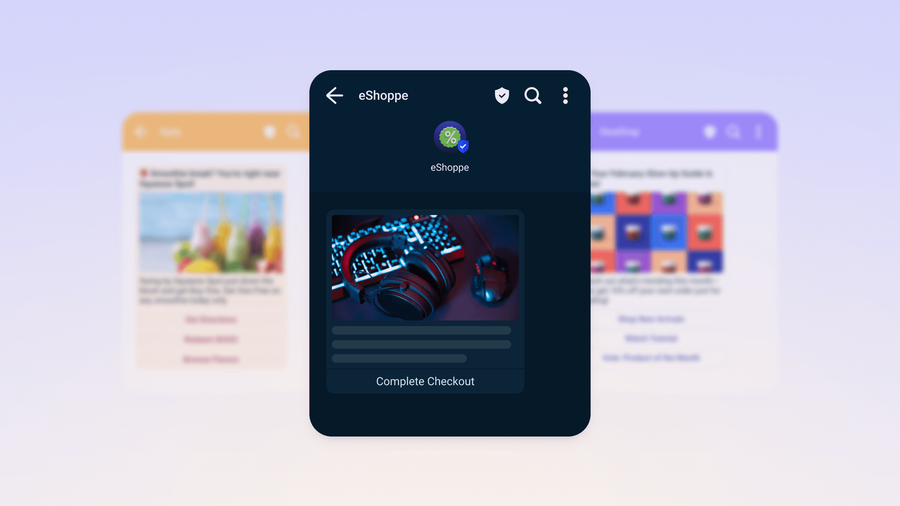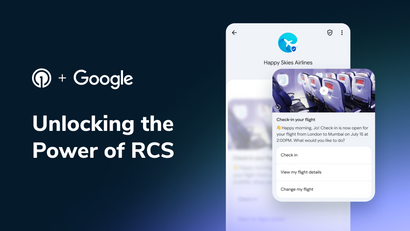In 2025, SMS marketing remains a reliable communication tool but it’s clear that consumer expectations will eventually evolve faster than the format. With engagement rates slipping, conversation threads cluttered with text-only messages, and consumers expecting more personalized, visually rich experiences, marketers are under pressure to keep up. The old playbook of mass-blasting coupon codes from anonymous shortcodes is quickly becoming noise.
Enter Rich Communication Services (RCS)—a modern messaging protocol that transforms basic text campaigns into branded, interactive experiences right inside the default messaging app. From carousels and call-to-action buttons to real-time updates and personalized offers, RCS is paving the way for text messaging to become a true performance marketing channel.

In an era where customers expect Netflix-style personalization and Amazon-level convenience, RCS delivers so much more than just a simple marketing text.
The anatomy of an RCS message
For marketers struggling with falling engagement, poor attribution, and a lack of interactivity in their SMS campaigns, RCS offers a new path forward—one that finally aligns with the omnichannel, customer-centric strategies they’ve been striving to build. Not to mention the ability to dive into deep analytics, including open rates, click-through rates, and engagement behavior.
These are the components of a typical RCS message that set it apart from the traditional SMS texts.
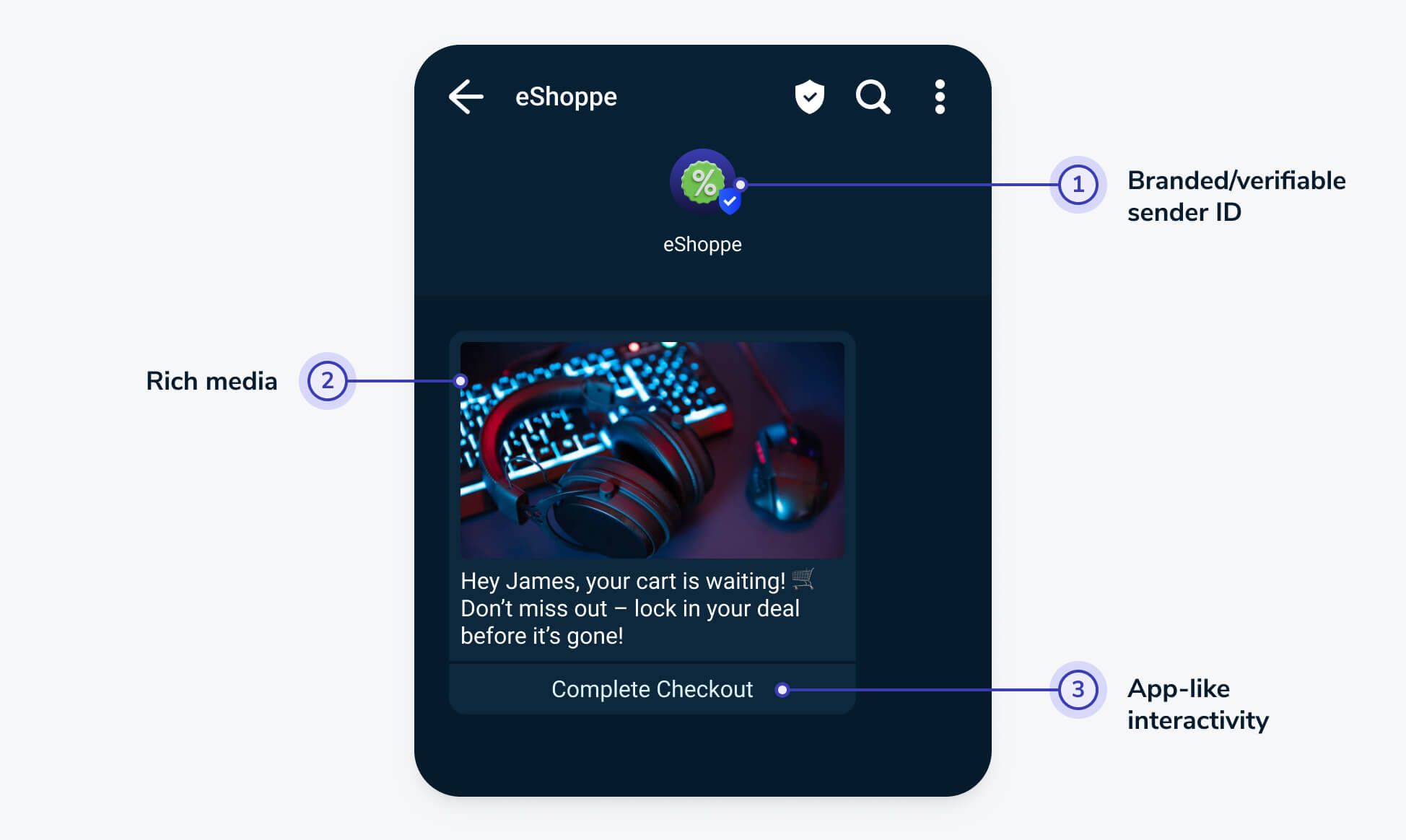
1. Branded (and verifiable) sender IDs, so customers know exactly who’s messaging them
2. Rich media formats, including videos, images, and interactive elements
3. App-like interactivity, all within the conversation thread
RCS marketing examples that convert
1. Achieve frictionless fintech self-service
Fintech platforms are no strangers to wrestling with clunky or fragmented user journeys at scale.
Traditional SMS, and even many app-based experiences, often force users to jump between multiple channels just to complete simple tasks. Visiting a website, downloading an app, or calling customer support might seem easy on their own, but when these steps are required in a single session to do things like apply for a credit card or check a loan status, the experience quickly becomes disjointed and frustrating.
By enabling rich, interactive messaging directly within their native SMS app, users can complete key actions (e.g., inquiring about products, submitting forms, receiving confirmations) without ever leaving the chat. This creates a frictionless, app-like experience that reduces drop-offs and improves conversions.
Axis Bank utilizes RCS messages with one-tap reply buttons, contributing to a self-service experience that fast tracks users through the funnel without the headache of playing musical chairs with different mobile channels.
See how fintech apps like Bitcoin.com build trust and drive revenue with smarter messaging strategies.
2. Create tap-to-buy shopping moments for the holidays
The fact that this example is in French—and yet the user experience is still immediately clear—speaks volumes about the intuitive power of RCS messaging. Nespresso leverages rich media carousels as an in-conversation product showcase, bringing an otherwise static cross-selling opportunity around the holidays to life with an action-oriented campaign at scale.
It also allows customers to replay the experience for a circular engagement experience, allowing them to explore multiple accessories or web pages… all from the same touchpoint.
And let’s be honest, a 73% open rate is nothing to scoff at.
3. Drive foot traffic with location-based RCS
Brick-and-mortar businesses, this one is for you. Imagine a customer walking near your store or restaurant when their phone lights up with a branded, visually-rich RCS message tailored to your location. It includes a limited-time offer just for them, along with a tappable map pin showing they’re only a few blocks away. With one tap, they can view directions, redeem the offer, or even reserve a spot.
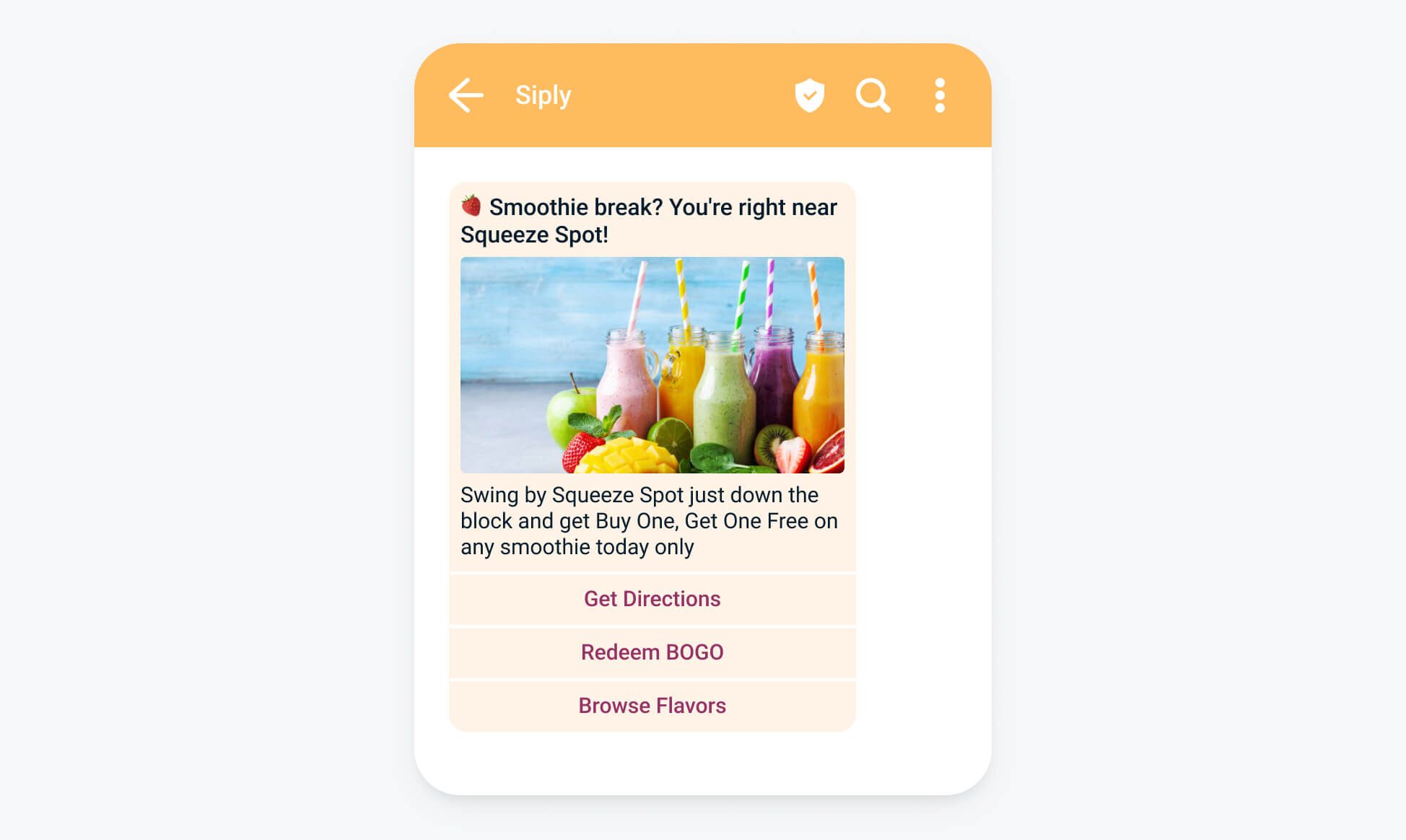
This kind of contextual, real-time engagement turns passive passersby into active customers. For brick-and-mortar businesses, RCS provides a direct, dynamic way to connect with nearby audiences and move them from the sidewalk into your storefront. It's the best of personalization and proximity… without needing an app.
4. Embrace a truly mobile-first newsletter
Tired of watching your beautiful email newsletters get buried in spam folders or skimmed over in crowded inboxes? RCS brings the newsletter into the modern age, delivering it instantly and visually right where your audience is most engaged: their messaging app.
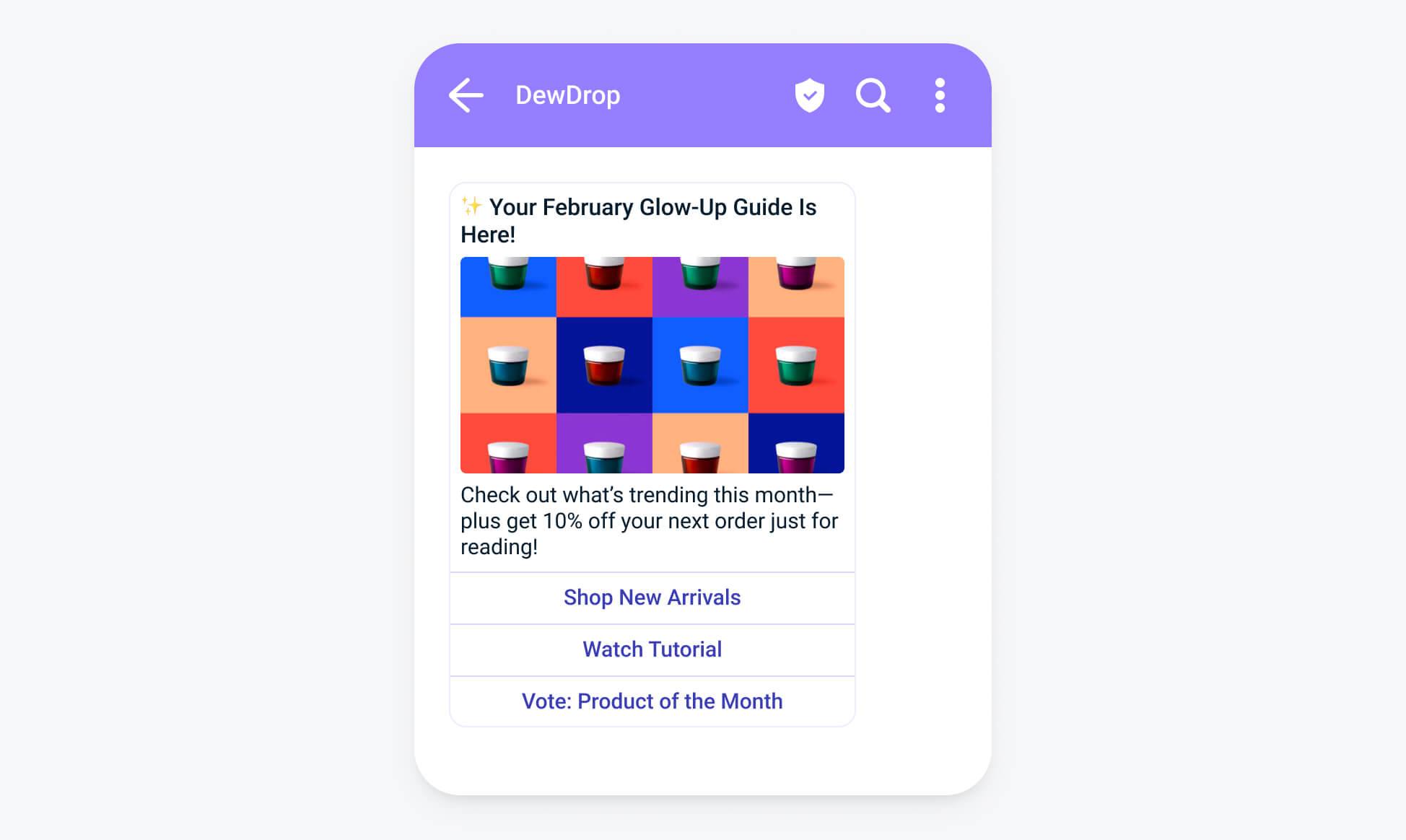
With RCS, your brand updates become immersive, mobile-first experiences that don’t require downloads, logins, or email opens. From product drops and brand announcements to seasonal tips and community polls, RCS lets you create dynamic, tappable messages that feel more like a conversation than a broadcast.
The result? Higher open rates, stronger engagement, and a direct, branded touchpoint that keeps your audience tuned in and ready to act.
5. Turn order confirmations into brand moments
Order confirmations are more than just receipts, they’re a golden opportunity to reinforce trust, reduce buyer anxiety, and even build post-purchase excitement. But with SMS, the experience is often strictly transactional. With RCS, it becomes personalized, visual, and interactive.
Instead of a dull text with an order number, imagine your customer receiving a beautifully branded message featuring images of what they just bought, delivery progress, and buttons to track or manage their order. It’s not just information—it’s a post-purchase experience that delights and reassures.
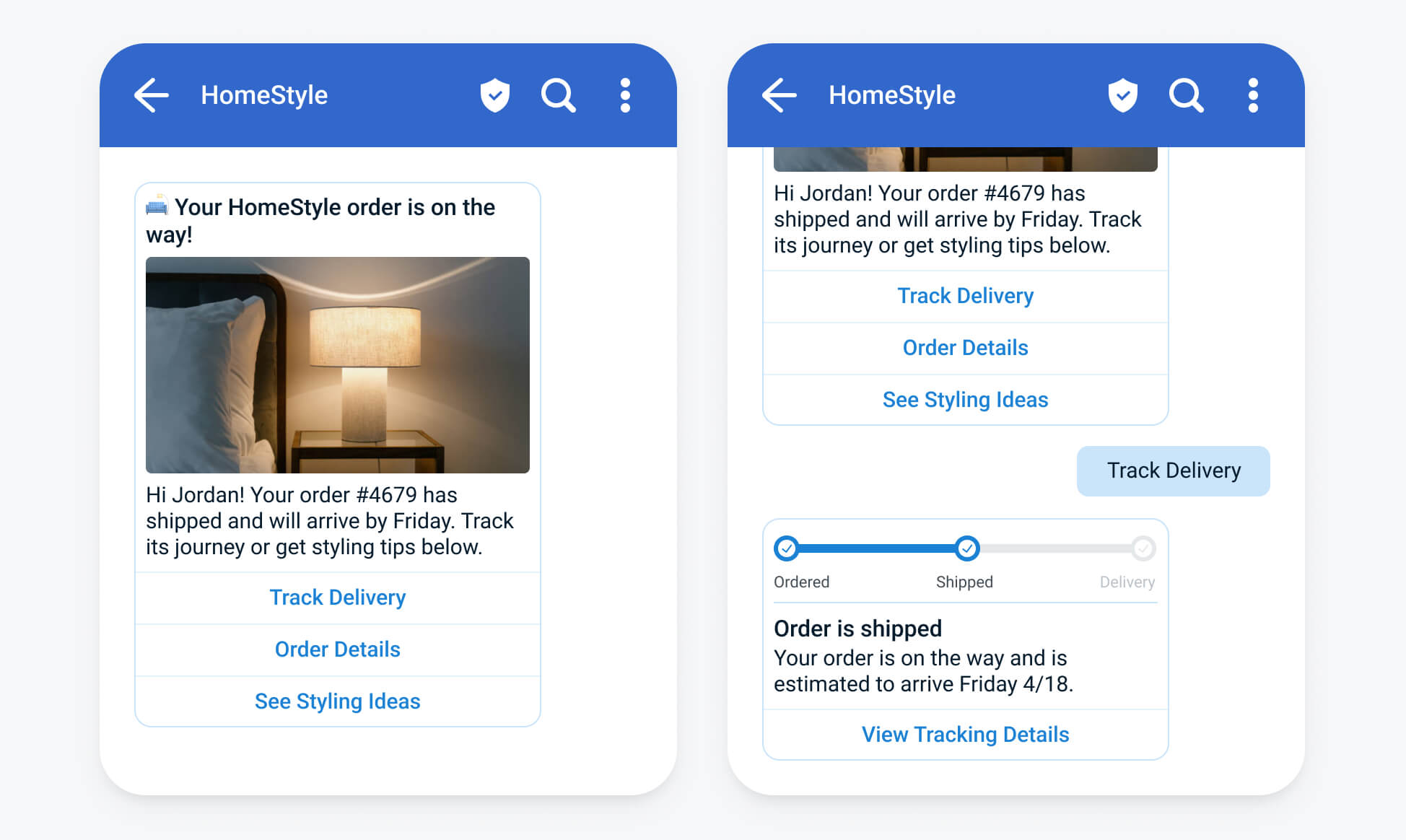
And because these messages are expected and welcomed, open rates skyrocket, giving you a prime opportunity to keep the customer relationship going strong after checkout.
6. Don’t skimp on high-stakes notifications
When every second counts, trust and clarity are everything. Whether you're sending a login code, a fraud alert, or a service outage notification, traditional SMS can run the risk of feeling impersonal at best, and suspicious at worst.
With RCS, you get a branded, verified messaging channel that customers instantly recognize as legitimate, making it ideal for critical communications. These messages don’t just stand out visually—they carry weight. Customers know they’re real, safe, and relevant.
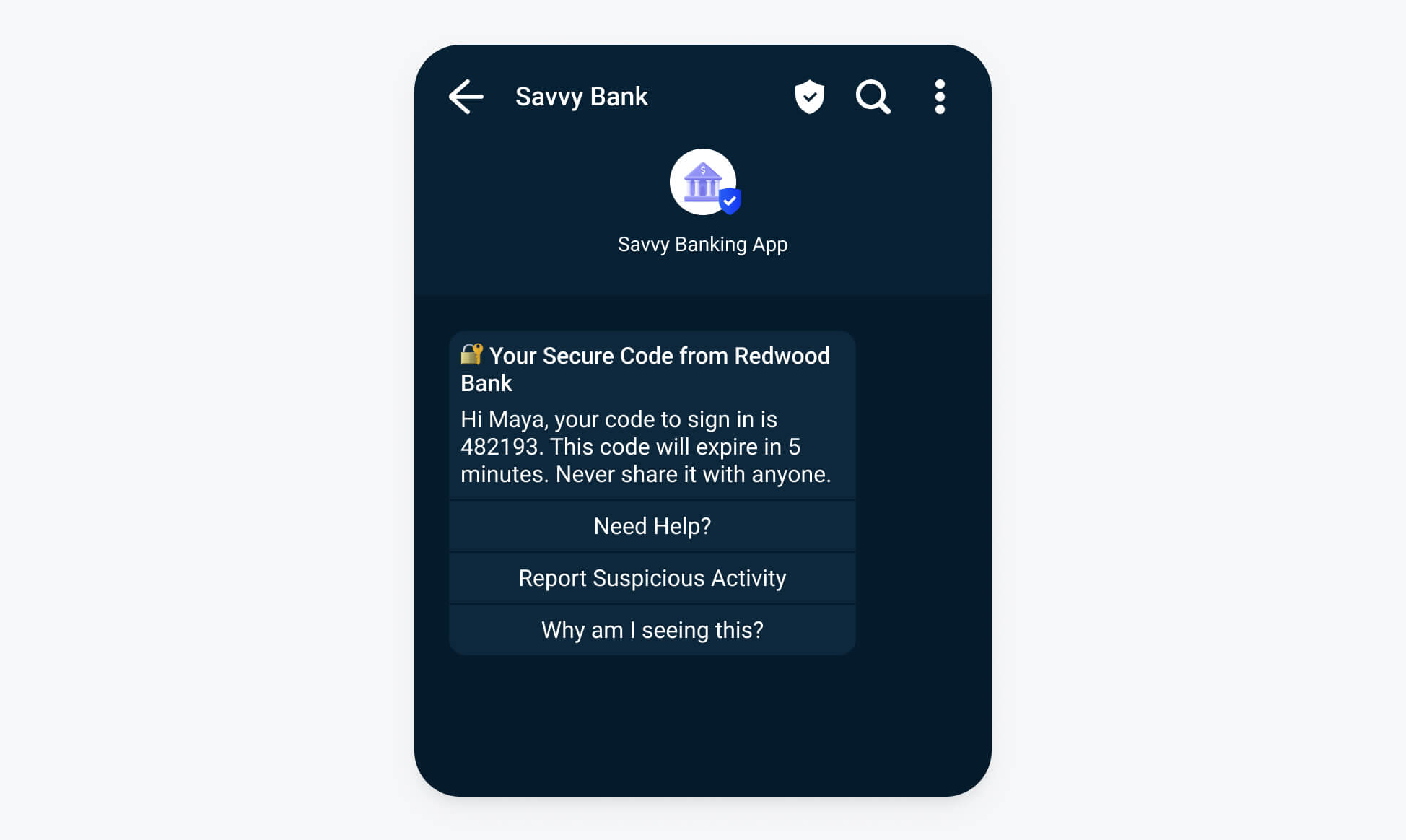
For industries like fintech, healthcare, and logistics, where trust and timing go hand-in-hand, RCS doesn’t just deliver the message, it delivers confidence.
RCS marketing best practices (at a glance)
| Best Practice | Why It Matters |
|---|---|
Use High-Quality Media |
Visuals increase retention and drive higher engagement than text alone |
Add Interactive Elements |
Buttons, quick replies, and carousels drive conversions and reduce friction |
Personalize at Scale |
Personalized messages resonate more and perform better |
Time It Right |
Contextual and timely messages are more relevant and likely to be acted upon |
Maintain Brand Consistency |
Verified branding builds trust and improves user experience |
Track & Iterate |
Use analytics to continuously improve performance and ROI |
How to implement RCS in your marketing strategy
Embracing RCS in your mobile marketing strategy can significantly enhance customer engagement, provide richer communication experiences, and drive higher conversion rates.
At a high level:
- Evaluate your audience: Ensure your users are RCS-compatible (growing rapidly on Android and now iOS 18+).
- Choose the right platform: Look for tools that support RCS with branded sender registration and analytics.
- Design campaigns for engagement: Think beyond text. Use imagery, buttons, and personalization.
- Test, track, and optimize: Treat RCS like a performance channel, not just a delivery method.
👉 For a more detailed setup, here is a walkthrough for setting up your first RCS-enabled agent.
Let’s elevate your customer experience
Getting started with RCS doesn’t have to be complex. Most modern customer engagement platforms (like OneSignal) now support RCS alongside SMS, email, and push notifications—making it easy to integrate into your omnichannel flows.
With OneSignal's intuitive drag-and-drop journeys builder, marketers can design and implement rich omnichannel messaging flows, without the need for extensive developer resources.
Get Started for Free